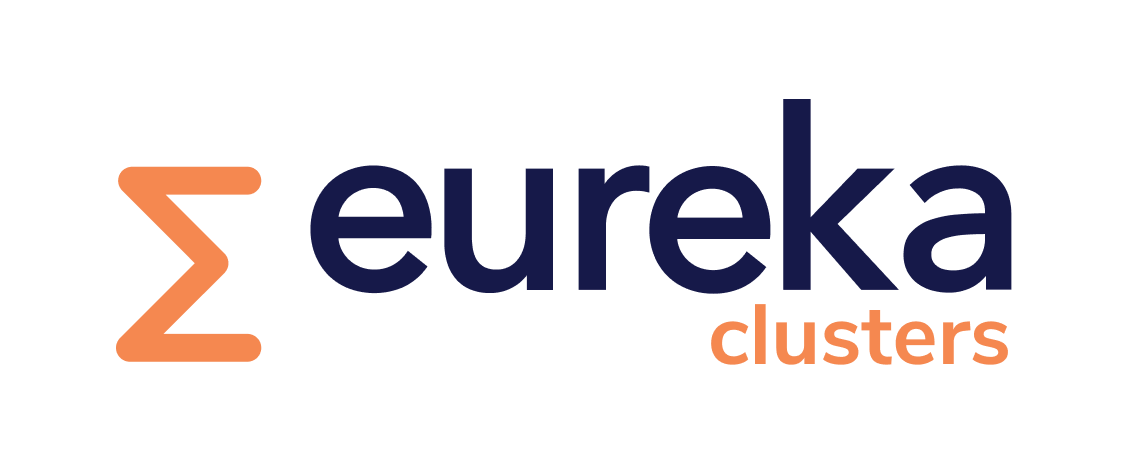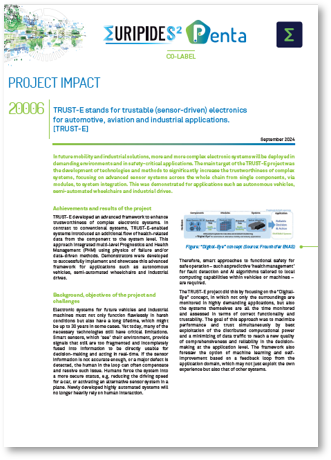Project status :
Running
Project website :
https://www.edacentrum.de/trust-e
Key application areas
 Transport and Smart Mobility
Transport and Smart Mobility  Digital Industry
Digital Industry Essential capabilities
 Systems & Components: Architecture, Design and Integration
Systems & Components: Architecture, Design and Integration  Safety & Reliability
Safety & Reliability
PARTNER
Aptiv Contract Services Sweden AB / Berliner Nanotest und Design GmbH / CWM - Chemnitzer Werkstoffmechanik GmbH / FRT GmbH / Fraunhofer IIS/EAS / Fraunhofer Institute for Electronic Nano Systems / IMEC / KTH Royal Institute of Technology / Mercedes-Benz AG / Nexperia Germany / Qamcom Research & Technology AB / RISE Research Institutes of Sweden AB / Robert Bosch GmbH / SABCA / Saab AB / Siemens AG / Synective Labs AB / University of Siegen / XenomatiX NV / edacentrum / scalable minds GmbH
Aptiv Contract Services Sweden AB / Berliner Nanotest und Design GmbH / CWM - Chemnitzer Werkstoffmechanik GmbH / FRT GmbH / Fraunhofer IIS/EAS / Fraunhofer Institute for Electronic Nano Systems / IMEC / KTH Royal Institute of Technology / Mercedes-Benz AG / Nexperia Germany / Qamcom Research & Technology AB / RISE Research Institutes of Sweden AB / Robert Bosch GmbH / SABCA / Saab AB / Siemens AG / Synective Labs AB / University of Siegen / XenomatiX NV / edacentrum / scalable minds GmbH
Countries involved
 Sweden
Sweden  Germany
Germany  Belgium
Belgium Project leader(s)
Kai KriegelKey project dates
April 2021 - June 2024TRUST-E stands for trustable (sensor-driven) electronics for automotive, aviation and industrial applications. [TRUST-E]
In future mobility and industrial solutions, more and more complex electronic systems will be deployed in demanding environments and in safety-critical applications. The main target of the TRUST-E project was the development of technologies and methods to significantly increase the trustworthiness of complex systems, focusing on advanced sensor systems across the whole chain from single components, via modules, to system integration. This was demonstrated for applications such as autonomous vehicles, semi-automated wheelchairs and industrial drives.
Achievements and results of the project
TRUST-E developed an advanced framework to enhance trustworthiness of complex electronic systems. In contrast to conventional systems, TRUST-E-enabled systems introduced an additional flow of health-related data from the component to the system level. This approach integrated multi-level Prognostics and Health Management (PHM) using physics of failure and/or data-driven methods. Demonstrators were developed to successfully implement and showcase this advanced framework for applications such as autonomous vehicles, semi-automated wheelchairs and industrial drives.
Background, objectives of the project and challenges
Electronic systems for future vehicles and industrial machines must not only function flawlessly in harsh conditions but also have a long lifetime, which might be up to 30 years in some cases. Yet today, many of the necessary technologies still have critical limitations. Smart sensors, which ‘see’ their environment, provide signals that still are too fragmented and incompletely fused into information to be directly usable for decision-making and acting in real-time. If the sensor information is not accurate enough, or a major defect is detected, the human in the loop can often compensate and resolve such issue. Humans force the system into a more secure status, e.g. reducing the driving speed for a car, or activating an alternative sensor system in a plane. Newly developed highly automated systems will no longer heavily rely on human interaction.

Therefore, smart approaches to functional safety for safe operation – such as predictive ‘health management’ for fault detection and AI algorithms tailored to local computing capabilities within vehicles or machines – are required. The TRUST-E project did this by focusing on the “Digital-Eye” concept, in which not only the surroundings are monitored in highly demanding applications, but also the systems themselves are all the time monitored and assessed in terms of correct functionality and trustability. The goal of this approach was to maximize performance and trust simultaneously by best exploitation of the distributed computational power and a minimizing of data traffic to reach a new quality of comprehensiveness and reliability in the decision-making at the application level. The framework also foresaw the option of machine learning and self-improvement based on a feedback loop from the application domain, which may not just exploit the own experience but also that of other systems.
Technological achievements
TRUST-E delivered innovations in hardware reliability, safety, health / lifetime monitoring, and the use of embedded AI techniques for highly demanding applications in sensing and edge computing. Demonstrators served as tangible proof of the project’s achievements, showcasing the innovative solutions and TRUST-E methodology realized through the collaborative efforts of all partners.
Urban delivery vehicle
Especially in the application of autonomous driving the position data of a car and the perception of the environment is highly safety relevant. Two sensor systems were implemented in the “Urban Delivery Vehicle” demonstrator to improve reliability and trustworthiness. For improving the localization in GPS restricted areas, a safety relevant high precision 6D Inertial Measurement Unit (IMU) and a LIDAR system together with Simultaneous Localization And Mapping (SLAM) were used. With the addition of those sensors, localization was possible in an industrial area with no GPS. Also localization with only the IMU was accurate for emergency trajectory calculation for shorter distances.
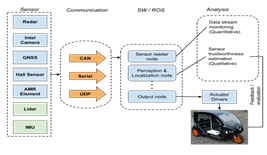
Figure: Urban delivery vehicle system
(Source: Aptiv)
Lane keeping robot
The primary function of the system was to keep a model race car between two lane marks while driving. Specifically, an RGB camera served as the sensor for this functional operation. The reliability and safety of the lane-keeping robot were guaranteed during its operating state by incorporating fault detection, health evaluation, and feedback rectification mechanisms. In this context, the fault detection component used an AI classification model for fault information extraction to generate the relevant health index. The key goal to realize and implement the « Digital – Eye « -concept of TRUST-E within a non-trivial autonomous system was reached.
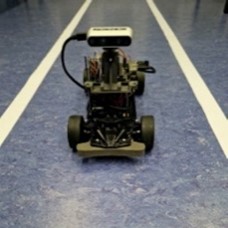
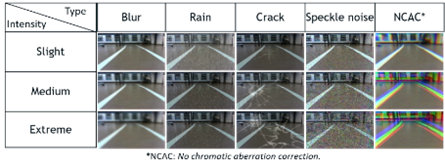
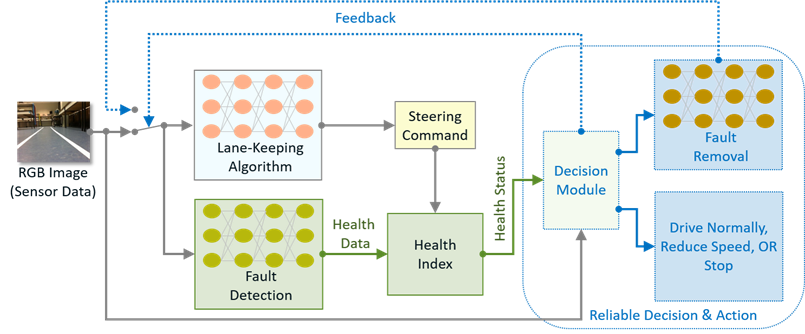
Automated guided vehicle (AGV)
An autonomous guided vehicle, based on a market leading Powered Wheelchair (PWC) platform, demonstrated demanding use-cases such as autonomous doorway traversal and assisted breaking. It combined innovative sensors and a control system with new software routines for deducing a ‘health score’ from the sensor data provided by the electronic modules as well as from environmental parameters.
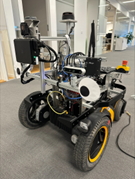
Power System-in-Package
The Power SIP demonstrator showed a possible implementation of a supervision logic, used to estimate the wear-status, and the remaining lifetime (RUL) of SIC-MOS power devices. Sensors for temperature, voltage drop and current were integrated with the power device under test. The sensor data were continuously sampled and processed by the attached processing unit, that delivered real time estimation of device’s health status over its communication interface. The basis for this estimation was a combination of a physics-based simulation and deep learning which is pretty unique. The models ran on a very small (300 kbyte of RAM) and energy-saving microcontroller in a context close to the power device.
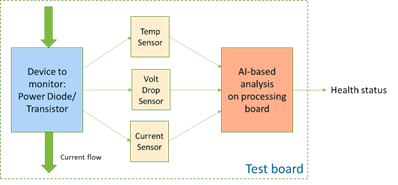
3D deformation measurement system
This demonstrator consisted of a digital image based (DIC)-based camera system for the in-plane and a chromatic sensor system for the out-of-plane (warpage) measurement and an innovative thermal chamber with heating features between 0°C to 250°C. The implementation of AI methods for the 3D deformation analysis led to an intelligent and time-efficient test procedure. The measurement time was reduced from 15-20 minutes to 1 minute thanks to AI path determination and because of the implementation of innovative algorithms the processing time for measurement evaluation could also reduced from 10 minutes to 4 seconds.
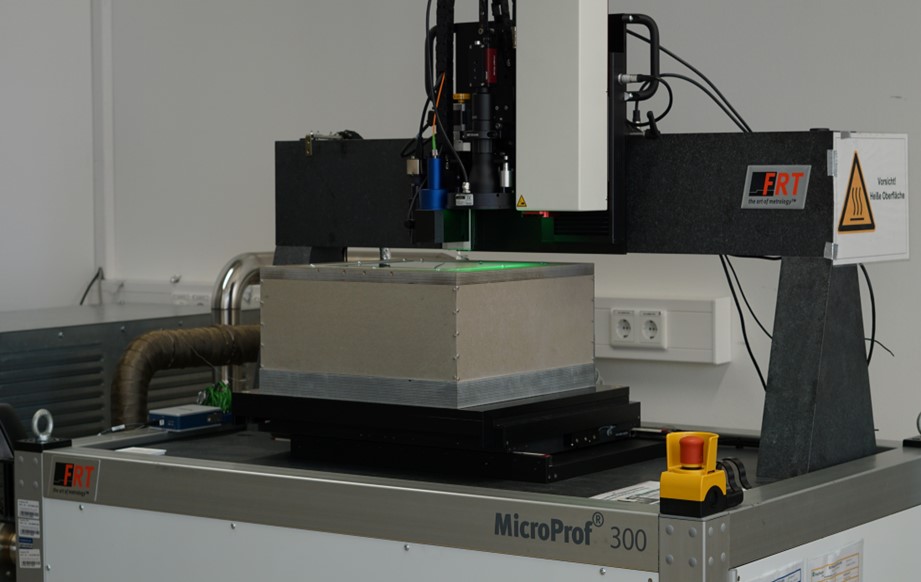
Nanotest, Chemnitzer Werkstoffmechanik, Camtek)
Market Potential
A market access study, conducted by the consortium, confirmed that the market perspectives for the technologies and products developed in TRUST-E remain excellent.
According to “Allied Market Research”, the global sensor market size was valued at $166.69 billion in 2019, and is projected to reach $345.77 billion by 2028, to register a compound annual growth rate (CAGR) of 8.9% from 2021 to 2028. Especially the radar sensor segment is expected to dominate the market throughout the forecast period[1].
The embedded AI market industry is projected to grow from USD 10.41 Billion in 2023 to USD 30.78 Billion by 2032, exhibiting a compound annual growth rate (CAGR) of 14.50% during the forecast period (2023 – 2032)[2]. Very promising demands trends have also been identified for the Electrification and Advanced Driver Assistance Systems (ADAS) , automotive semiconductor and the motion control market.
Societal & Economic Impact
TRUST-E as a strategic alliance among semiconductor companies, equipment manufacturers, module/system-integrators and leading European research institutes provided new AI-based methods and trustable value chains. Industrial partners will increase their competitiveness and market share, and reinforce Europe’s economy in automotive, alternative mobility and industrial applications from semiconductor- to system-level. The TRUST-E methodology might become in a few years a standard approach for safety-critical systems. Compared to the existing approach with huge safety margins, the new approach saves money while increasing overall safety by bringing self-awareness into the components, modules and systems. TRUST-E developed trustable technologies and methodologies by using AI ; this will extend the lifetime of electronics and reduce resources and the CO2-footprint of future products.
Patents, Standardisation, Publications
The partners actively disseminated the results from the TRUST-E project at 25 conferences and workshops including EFECS, EPoSS and EuroSimE by means of oral presentations and posters. The project delivered 28 scientific publications and 2 white papers. The insights gained from the project TRUST-E are already incorporated into education programs of the academic partners. Industrial partners (Nexperia, Siemens, Bosch…) were active on several standardisation boards and will transfer project results to standardization organisations like JEDEC, DKE and ACE.
Future Developments
The consortium showed a very fruitful way of collaboration with great progress and results. It also became clear that this project was not merely an end, but a stepping stone to move forward in the area of reliable industrial power electronics, safe autonomous driving and advanced measurement systems. All use cases had a product-oriented focus, and components of the metrology use case are intended for commercialization by the involved partners. The IMU and LIDAR sensor systems play a vital role in vehicle safety and are expected to be developed further as products. The combination of AI methodology and advanced sensor technology is crucial for advancing condition monitoring to the next level. Further development and integration of such functionalities, for instance in industrial power devices is one of the challenges. To meet these goals, follow-up projects are envisaged and already under discussion.
1 Source: https://www.alliedmarketresearch.com/sensor-market
2 Source: https://www.marketresearchfuture.com/reports/embedded-ai-market-12254

